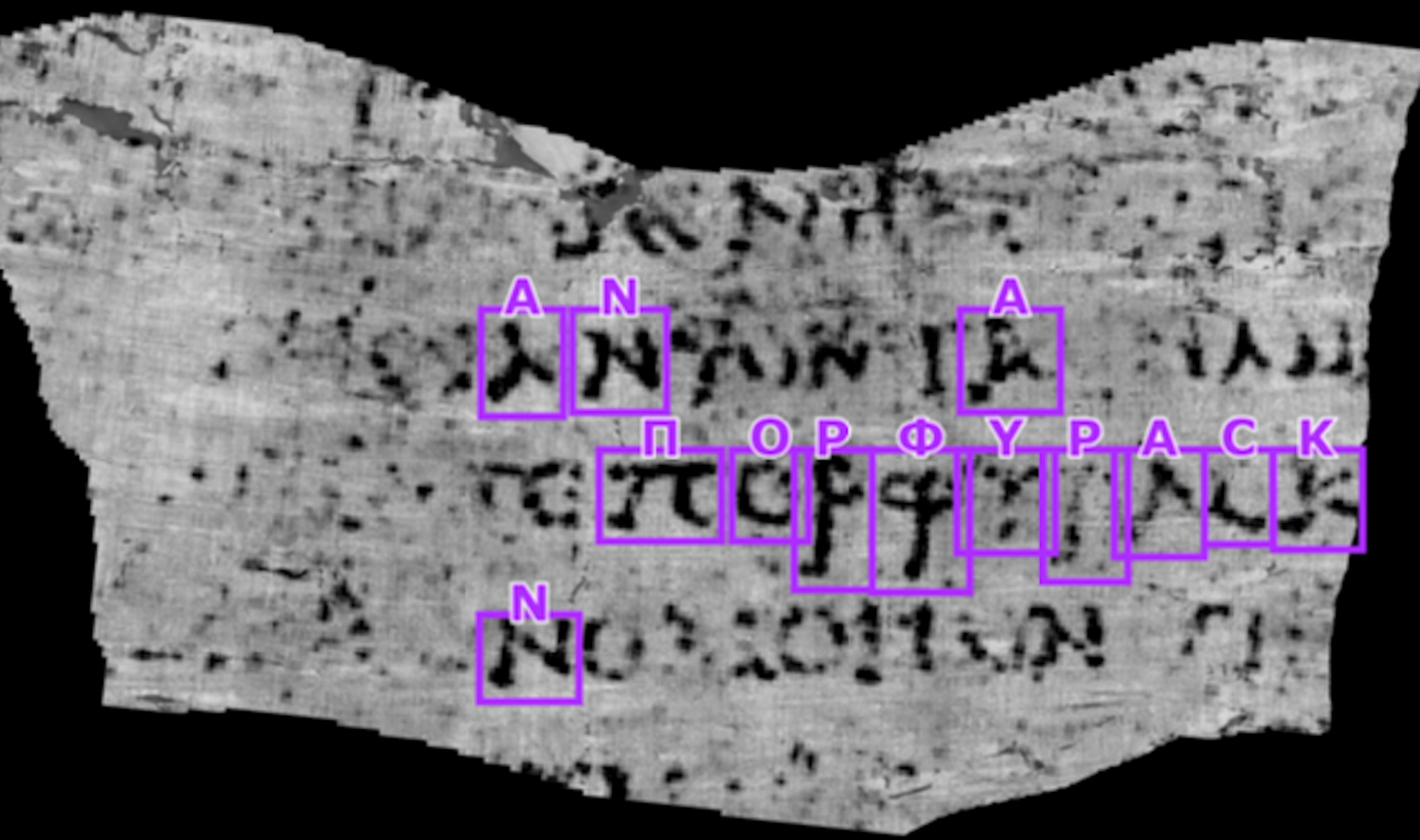The News
For the first time, amateur researchers have deciphered letters on an unopened ancient scroll, using artificial intelligence to isolate the letters.
The achievement announced Thursday was the result of a contest organized by former Github CEO Nat Friedman and fellow entrepreneur Daniel Gross, who launched the Vesuvius Challenge in March. As more people, mainly from the tech industry, have gotten involved, the award money has increased, with a grand prize of $700,000.
Luke Farritor, a 21-year-old computer scientist, was the first to uncover a word in the scroll and received a $40,000 “First Letters Prize.” The result could lead to a significant increase in the number of ancient texts that are available for scholars to study, and offers an example of how AI is poised to revolutionize nearly every industry.
“This will change papyrology in general,” said Federica Nicolardi, an assistant professor at the University of Naples who was involved in the effort. “It opens up a new part of the discipline.”
In this article:
Know More
The text deciphered was written on papyrus that was turned into ash by the eruption of Mt. Vesuvius in 79 CE. About 1,800 scrolls in total were then buried in mud for nearly 2,000 years. After they were discovered in 1752 in a Pompeii villa owned by Julius Caesar’s brother-in-law, researchers began trying to peel them apart in order to read the text. Those efforts were largely unsuccessful and resulted in the partial destruction of some of the scrolls.
Brent Seales, head of the University of Kentucky’s Center for Visualization and Virtual Environments, found a novel way to read the scrolls without opening them. Among other tools, he used a Diamond Light Source particle accelerator, a kind of x-ray that is precise enough to scan the layers of the scroll.
When Friedman heard about this, he recognized the opportunity to use AI to decode the data Seales had gathered.
Nicolardi believes she and other researchers will soon be able to read entire scrolls, including the bottom, where the title of the work and the name of the author are usually found.
She thinks the scrolls are likely works of Greek philosophy and could be written by an Epicurean philosopher, or even Aristotle, she said.
Reed’s view
The breakthrough deciphering these scrolls is interesting on its own. But what seems even more significant is what it says about how AI is changing science.
Scientific breakthroughs usually happen when one piece of research inspires another, and so on. Each small discovery enables another until, finally, a massive breakthrough occurs.
That process can take years, decades, or more. We’re about to see it happen much faster. When that happens, experiments that used to take years can take seconds and the process of one discovery inspiring another can happen instantaneously, and across any geography.
That’s exactly what happened with the Vesuvius Challenge. Several months after it launched, a rocket scientist named Casey Handmer stared at the digital scans of the scrolls for hours, looking for clues. He noticed a “crackle pattern” that he thought might be ink. It was just a hypothesis and he shared it with other researchers.
Farritor, who was interning at SpaceX at the time, spent evenings using machine learning code to find more crackle, constantly refining the algorithm. Eventually, the crackle turned to complete letters. It turned out Handmer’s hypothesis was right. He shared his findings on Twitter.
The work inspired Youssef Nader, a biorobotics grad student in Berlin, who refined the process of discovering the letters with a more involved machine learning technique.
In a few months, a handful of people who had never worked in papyrology moved the field forward 20 years.
